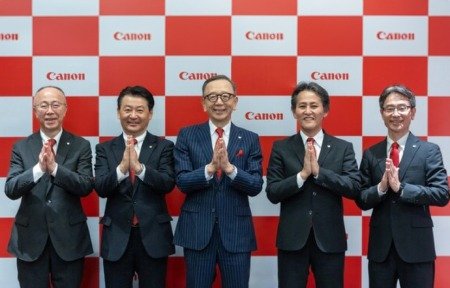Canon Inc. has delivered its first next-generation nanoimprint lithography machine to the Texas Institute for Electronics, a semiconductor consortium affiliated with the University of Texas at Austin.
The cutting-edge machine, designed for research and development and for advanced semiconductor prototype production, consumes just one-tenth of the power that traditional lithography machines use, marking a significant advancement in energy efficiency.

Canon aims to sell between 10 and 20 units annually over the next five years.
Kazunori Iwamoto , Canon’s deputy chief executive for optical products
Canon started developing this technology in 2014 and secured the sale last October through a partnership with Kioxia and Dai Nippon Printing. Although industry experts questioned its viability, Canon was confident in its technology and pursued the project.
The nanoimprint lithography system can form complex three-dimensional circuit patterns with a single stamp, compared with traditional photolithography that projects circuit patterns using high-intensity ultraviolet light, an energy-intensive process. The new technology has shown promise in handling ultra-fine circuits essential for advanced logic chips.
Despite its potential, Canon faces challenges in scaling the technology for broader use. Strategic partnerships may be needed to develop compatible materials and address dust particle contamination issues that could disrupt manufacturing.
Kazunori Iwamoto, Canon’s deputy chief executive for optical products, said the company aimed to sell between 10 and 20 units annually over the next five years, a target that reflects optimism about the technology’s adoption.
This U.S. debut highlights the growing collaboration between Japan and the United States in the semiconductor and technology sectors as Canon positions itself as a key player in the evolving industry landscape.
